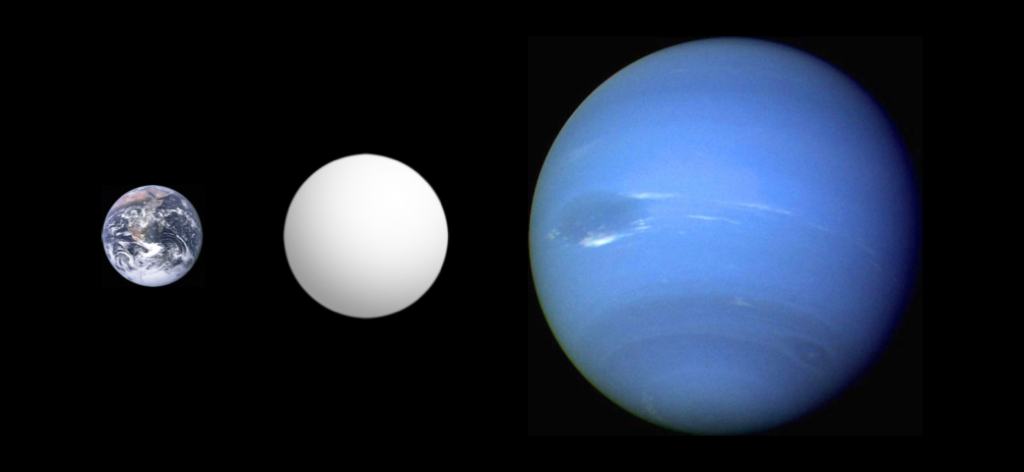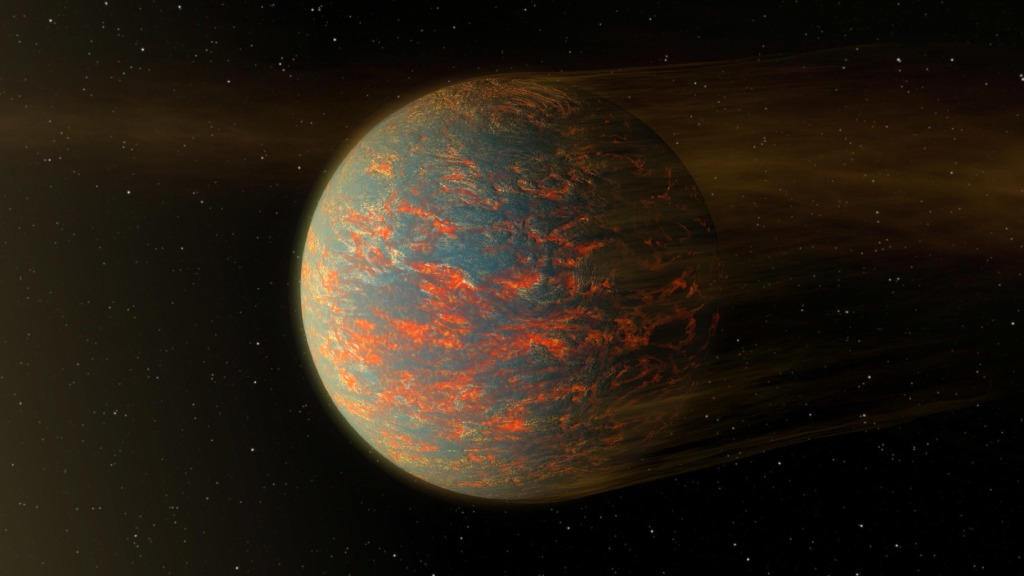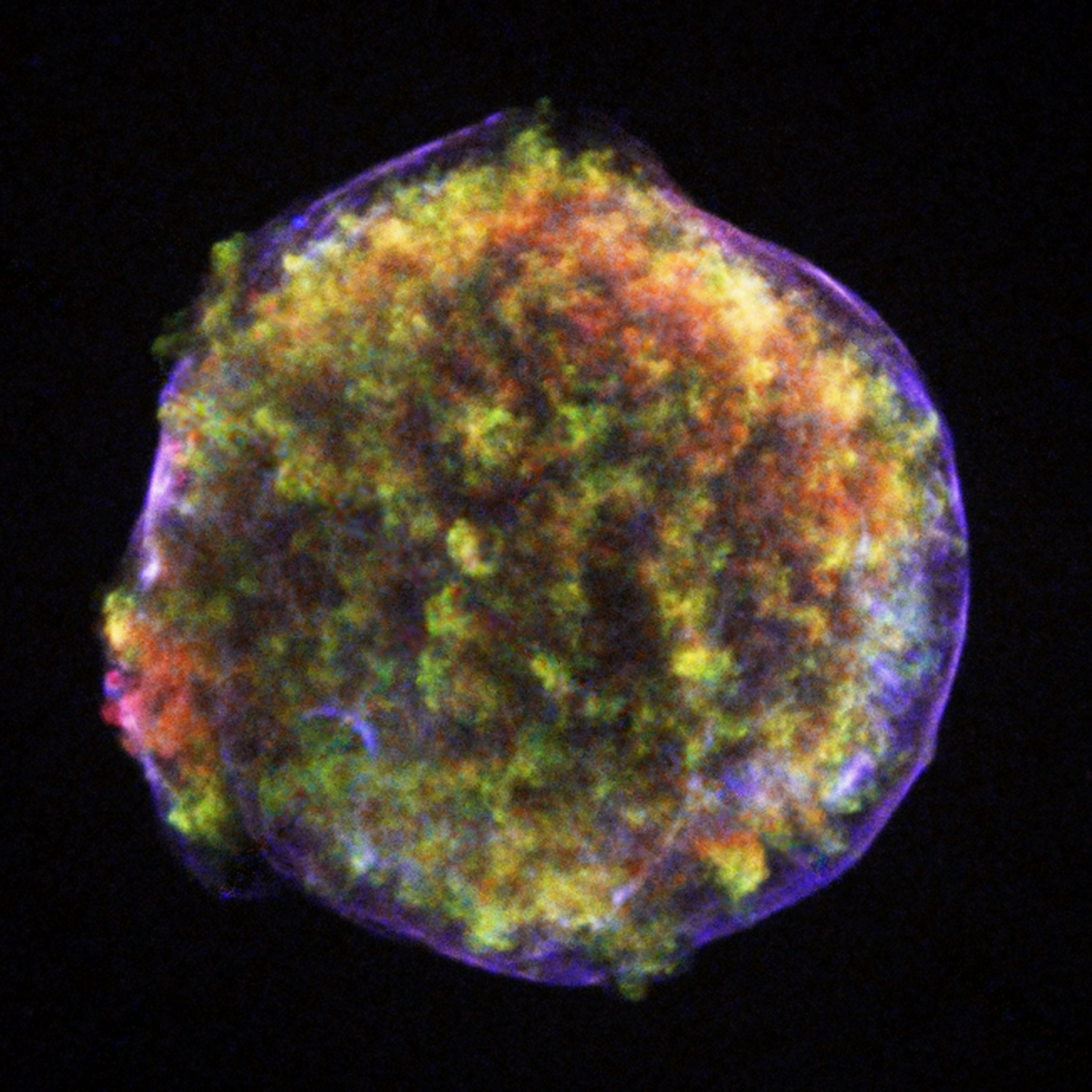
Super Earth CoRoT-7b next to Earth and Neptune for comparison, Source: Science News, Wikipedia
The planets of the solar system, and the categories they fall into is basically common knowledge in this day and age. There are the rocky and dwarf worlds with a mass and size comparable or less than that of Earths. These planets can be anywhere from close to the sun, far out at the edge of the solar system, or somewhere in-between. Then after these earth like worlds comes the massive ice and gas giants being 10s to 100s of times more massive and large than Earth. Such a large jump is a bit strange, since there should not be anything particularly wrong with a planet between the mass of Earth and Neptune, so is there anything that fits into that gap?
It just so happens that the answer to this question is a bit outside the solar system, specifically Exoplanets, which host worlds completely foreign to our perception of planets. It just so happens that one of there is a celestial body that happens to fit right into that large mass gap, they’re known as “Super Earths”.
Orbiting at a mass between 2 to 10 times that of earth, Super Earths are a very mysterious object since they actually encompass a large array of planetary compositions. Those with lower masses tend to be similar to earth with a somewhat thicker atmosphere. However as they get more massive that atmosphere eventually makes them similar to Neptune, those variety are normally called Mini Neptunes. Somewhere in-between these two lies some interesting possibilities such as water worlds, planets that consist mostly of water in a supercritical state (The line between liquid and gas) due to balancing both heating from their star, and pressure accumulated from the mass. The final product is a planet with a layer of water vapor on top of highly pressurized water surface.
Super Earths were first discovered in 1992 by Aleksander Wolszczan and Dale Frail orbiting a pulsar, a fast spinning and radiating neutron star, which showed that these bodies did exist. However, it was not until 2005 though that these bodies were found in something akin to solar system orbiting the red dwarf Gliese 876. Over the past couple years many more of these worlds were found, projected to take up 1/3rd of all exoplanets. These planets are also potentially quite livable, since these planets have been found within the habitable zone of stars such as Gliese 581, thus possessing the likelihood of having liquid water on the surface.

Hypothetical image of 55 Cancri e Source: Nasa
It must be known though that many of the details regarding the surface of these worlds is still a mystery. The Super Earth’s above found in the habitable zone can have a surface temperature ranging from -3to 40ºC depending on how much energy the planet’s surface absorbs. Even worlds that we’ve analyzed such as 55 Cancri e experience a temperature fluctuation of 1300ºC during a rotational period. Despite this uncertainty, Super Earths are considered one of the prime candidates of extraterrestrial life since their mass gives them a thick atmospheres, geologic activity and strong magnetic field, all conditions necessary to start life on earth.
Observing Super Earths have taught us so much about planetary formation, and hint at the possibility of life on other worlds, to a degree that the solar system simply can’t. Studying these far-out worlds are essential in fully understanding where and how we came to be.
• Noah Herrero

One response to “Super Earths, what’s beyond the solar system?”
I really enjoyed reading this post as it was information that was completely new to me. The concept of a super earth is interesting as it makes us wonder whether there truly is other life out there and having observations on worlds that could possibly support life helps to prove this theory. Furthermore, it makes me wonder how far in the future it would be before technology advances where we can get clear images or even be able to travel to these worlds.
LikeLike